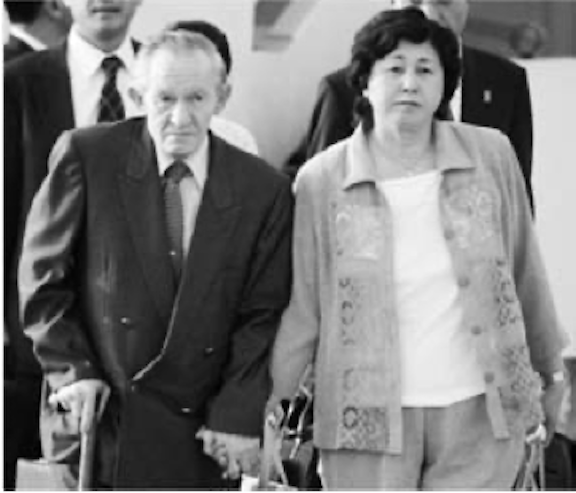|
Related Texts:
Taken! (2001) |
ABDUCTED FOREIGN NATIONALS: Charles Jenkins and Hitomi SogaThe American deserter Charles Jenkins had an arranged marriage to Japanese abductee Hitomi Soga. One day his KWP Instructor introduced him to Soga and told Jenkins, “while you two might not know this yet, your destiny is very similar. There is nothing promising in this country for you two, but if you decide to be together, at least you will have each other.” Jenkins, who continues to enjoy his marriage with Soga in Japan today, recalls those were “words that spoke the truth.”
Hitomi Soga, the wife of Charles Jenkins, was the only member of her family to return to Japan in October 2002, thanks to a deal negotiated during the Pyongyang Summit. Jenkins and their two daughters remained in North Korea. Negotiations immediately resumed in 2004 in order to unite the family, but Jenkins’ status as a U.S. citizen and deserter from the U.S. Army complicated matters, since Jenkins assumed he would have to face U.S. military justice. On the morning of May 22, 2004, two years after Soga’s return to Japan, several senior personnel from the North Korean Foreign Ministry came by car to pick up Jenkins and his two daughters, who still resided in Pyongyang. They took him to the Daedonggang Guest house where they met Japanese Prime Minister Koizumi in person. Jenkins and his daughters initially refused to return to Japan with Koizumi. His memoirs describe the behind-the-scenes discussions in which, for three hours before Koizumi’s arrival, senior DPRK officials warned him of the consequences if he were to take Koizumi’s offer and agree to go to Japan.87 They claimed that the U.S. would charge him with desertion and that even if he were not executed, he would be jailed for life. They claimed his two daughters and his wife would be harassed in Japan and their lives would be miserable. One suggested that the car carrying Jenkins and his daughters from the Guest house would not in fact take them to the airport, but instead to a political prison. The officials would see Koizumi off and tell him that Jenkins had decided to stay. Even the DPRK’s Vice Foreign Minister joined in the threats and said that Jenkins was “not to leave North Korea.” Jenkins accordingly declined Koizumi’s offer, but Koizumi, understanding Jenkins’ predicament, proposed that he and his daughters should meet Soga in a third country. Somehow this arrangement was acceptable to North Korea, perhaps because they believed the family would return to North Korea. Jenkins was allowed to go to Indonesia, and there, outside of North Korea’s jurisdiction, in 2005, he freely expressed his family’s desire to go to Japan, which they did. |

